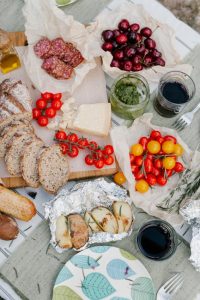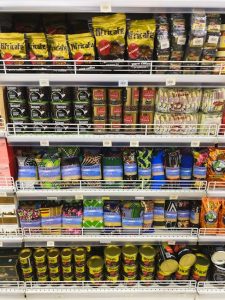Cooking for Two: A Guide to Delicious and Efficient Meals
Cooking for two can be a delightful experience. It allows you to create intimate and personalized meals for your significant other or simply for yourself. It’s a chance to explore new flavors, experiment with different cuisines, and create a cozy atmosphere around the dinner table. However, cooking for two can also present challenges, especially if you’re used to cooking for a larger group.
One of the most common concerns is portion control. It’s easy to overestimate the amount of food needed, leading to leftovers that might end up wasted. Finding recipes specifically designed for two people can be challenging, as many cookbooks and online resources focus on more significant portions. Another aspect to consider is the time commitment. You might be tempted to stick to simple recipes to avoid spending too much time in the kitchen, but there are ways to make even complex dishes manageable for a couple.
This article will address these challenges and provide a comprehensive guide to cooking for two. We’ll explore tips for planning and prepping your meals, adjusting recipes for smaller portions, and making the most of your time in the kitchen. We’ll also discuss strategies for saving money and minimizing waste while ensuring your meals are delicious and satisfying.
Planning and Prepping: Laying the Foundation for Success
Before you even think about recipes, planning your meals effectively is crucial. Start by considering your lifestyle and dietary preferences. Do you have busy weekdays and more time on weekends? Are you both vegetarian or vegan? Are there any specific dietary restrictions or allergies you need to accommodate? Understanding your needs and preferences will help you tailor your meal plan accordingly. For instance, if you both work long hours during the week, you might opt for quick and easy meals that can be prepared in under 30 minutes. On the other hand, if you have more time on weekends, you can explore more elaborate recipes that require longer cooking times.
Create a weekly or bi-weekly meal plan once you know what you want to eat. This will help you shop strategically, avoid impulse buys, and reduce food waste. Studies have shown that meal planning can lead to significant cost savings and decreased food waste. [Citation: Study on Meal Planning and Food Waste]. When planning your meals, remember to incorporate a variety of flavors and cuisines to keep things interesting. Consider themes like ‘Taco Tuesdays,’ ‘Mediterranean Mondays,’ or ‘Seafood Saturdays’ to add fun and variety to your cooking routine. You can also try incorporating seasonal ingredients to take advantage of fresh produce and support local farmers.
Prepping your ingredients in advance can significantly streamline your cooking process. Chop vegetables, measure spices, and even pre-marinate proteins on the weekend to save time during the week. Invest in reusable containers to store your prepped ingredients in the refrigerator. This will save you time and make cooking more enjoyable and stress-free. For example, you can spend an hour on Sunday prepping vegetables for the week, such as chopping onions, carrots, and peppers. This way, when you’re ready to cook during the week, you can grab the prepped ingredients and start quickly. You can also pre-marinate chicken or fish on the weekend to save time during the week. This will allow the flavors to penetrate the meat and create a more flavorful dish.
Recipe Adjustments: Making the Most of Your Ingredients
Not every recipe is designed for two people, but that doesn’t mean you can’t enjoy them. Learning to adjust recipes for smaller portions is a valuable skill for any home cook. The key is to understand the proportions and scale them down accordingly. For example, if a recipe calls for four servings of pasta, you can easily reduce it to 2 servings by halving the pasta and adjusting the sauce accordingly. When dealing with ingredients like spices, herbs, or oil, you might not need to reduce them drastically. A slight reduction will often suffice to maintain the dish’s flavor profile. For instance, if a recipe calls for one tablespoon of olive oil, you can reduce it to 1 teaspoon for a smaller portion.
Don’t be afraid to experiment with different ratios and ingredients to find what works best for your taste. Remember, the goal is to create a delicious and satisfying meal for two, not to follow recipes to the letter. You can also use leftovers from previous meals to create new dishes. For example, leftover roasted chicken can be used in a salad or a soup. This will help you reduce food waste and save money.
Efficient Cooking Techniques: Saving Time and Effort
Cooking for two doesn’t have to be time-consuming. You can employ many efficient techniques to get dinner on the table quickly and easily. One strategy is to utilize one-pan meals. Often prepared in a skillet or oven, these dishes require minimal cleanup and can be cooked quickly. For example, you can make a one-pan and stir-fry by tossing chicken, vegetables, and sauce in a skillet and cooking until everything is tender. This meal can be prepared in under 30 minutes and requires only one pan to clean.
Another tip is to use your slow cooker or Instant Pot. These appliances allow you to prepare meals without constant supervision, making them ideal for busy couples. You can throw ingredients into the slow cooker in the morning and come home to a delicious meal ready to serve. Similarly, an Instant Pot can quickly cook various dishes, from soups and stews to rice and beans. For instance, you can make a hearty beef stew in the slow cooker by combining beef, vegetables, and broth in the morning and letting it cook all day. This will give you a flavorful and comforting meal when you get home from work.
Finally, don’t be afraid to embrace leftovers. You can repurpose leftovers into new dishes, such as turning a roast chicken into a salad or a pasta dish into a frittata. This will save you time and money and reduce food waste. For example, you can use leftover roasted vegetables to make a frittata or a quiche. This will help you use all the ingredients and create a new and delicious meal.
Cooking for two can be an enriching and enjoyable experience. It allows you to connect with your partner over a shared passion for food, fostering a sense of intimacy and togetherness. Planning your meals, adjusting recipes, and utilizing efficient cooking techniques can create delicious and satisfying meals without feeling overwhelmed. This approach saves time and money and encourages a healthier lifestyle by promoting home-cooked meals with fresh ingredients.
Experimentation is vital to keeping your culinary journey exciting and fun. Don’t be afraid to try new flavors, cuisines, and ingredients. Explore different cooking methods, such as grilling, roasting, or stir-frying, to add variety to your repertoire. The beauty of cooking for two lies in the freedom to personalize your meals to your tastes and preferences. For example, if one partner enjoys spicy food while the other prefers milder flavors, you can easily adjust the recipe to accommodate both palates.
Remember that cooking for two doesn’t have to be rigid. It’s perfectly acceptable to deviate from recipes or improvise based on what you have available in your pantry. Embrace the opportunity to get creative and experiment with different combinations of flavors and textures. For instance, a simple chicken stir-fry can be transformed into a unique culinary adventure by incorporating fresh herbs, spices, and a variety of vegetables. The key is to have fun and enjoy the process of creating something delicious together.
Ultimately, successful cooking for two is about finding a balance between efficiency and enjoyment. It’s about creating a routine that suits your lifestyle and preferences while allowing spontaneity and creativity. Whether you prefer to plan your meals or cook on a whim, the most critical aspect is to embrace the shared experience of creating and savoring meals together. This shared culinary journey can strengthen your bond, create lasting memories, and foster a deeper appreciation for the art of cooking.

Photo by Anastasia Shuraeva on Pexels







Your point of view caught my eye and was very interesting. Thanks. I have a question for you.
Your article helped me a lot, is there any more related content? Thanks!
I don’t think the title of your article matches the content lol. Just kidding, mainly because I had some doubts after reading the article.